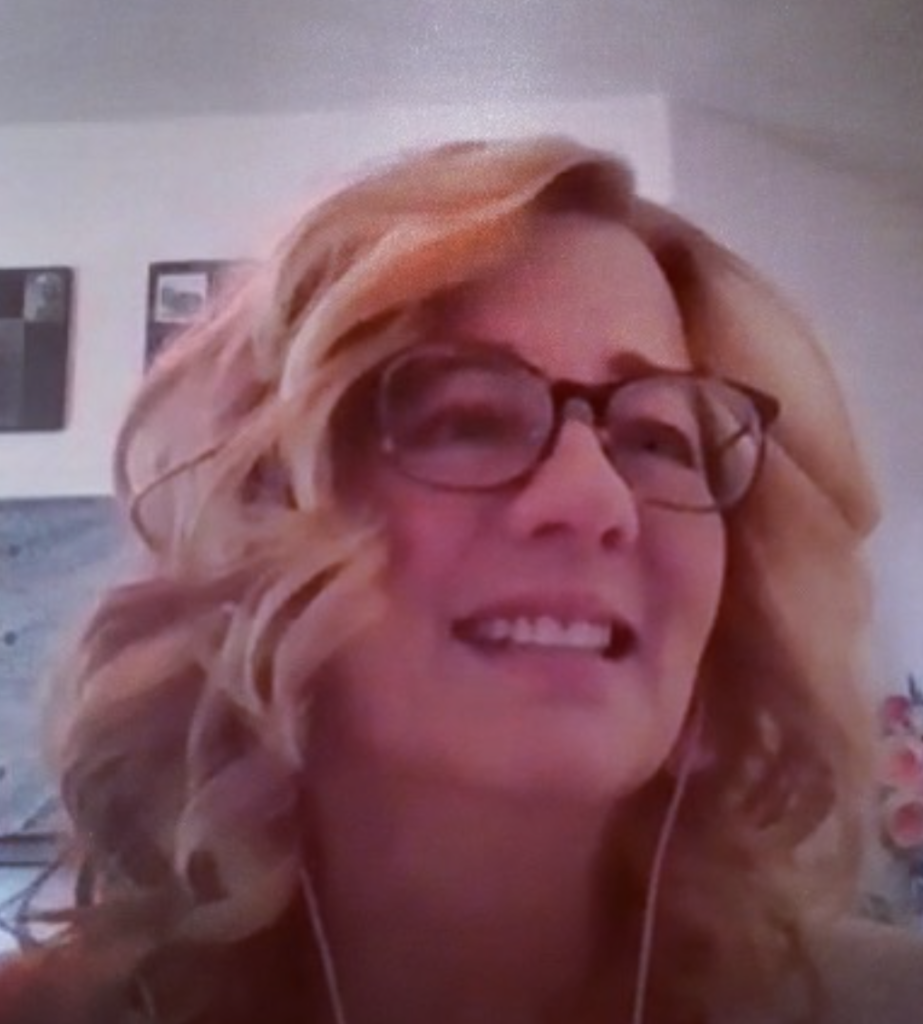We share very wise words from our Mental Health Ambassador Mike Veny. The more men talk and share stories, the more we can break the stigma and learn how to help. #menshealthweek #mentalhealthforall #LyfebulbAmbassador #mentalhealth
In March, Lyfebulb was honored to be a part of the Chris Klug Foundation’s Women in Transplant Webinar. The Chris Klug foundation was created to inspire, educate and increase donor registration. In addition to hosting webinars to educate patients and hosting events designed to increase awareness of the need for organ donors, they also bring patient stories of empowerment to fellow patients when they need it most. Their Bounce Back Give Back Awards are given to patients who have not only bounced back from their transplant, but are also giving back to their communities. Furthermore, their Donor Dudes program reaches high-school and college-aged individuals with an intent to inspire them to register to become organ donors.
After attending the women in transplant webinar, a cause near and dear to my own heart, I knew I needed to reach out and get involved, so I sent an email to Anna Morgan.
Anna is the Program and Communications Manager at the Chris Klug Foundation, and she plans events for the organization, including some of the ones I mentioned above. She was born in Wales in the United Kingdom and made the move to Colorado as an adult. Anna’s connection to transplant isn’t just a business one, though. During the Covid pandemic, her brother-in-law was admitted to the hospital with heart failure and required a transplant. The experience opened Anna’s eyes to the world of transplant. When she discovered an opening at the Chris Klug foundation shortly after, she knew it was her next move. In her words, “I feel there are very few jobs where you get to meet this many strong and inspiring individuals and get to learn from each one.” She speaks fondly of the experiences she’s had with donors, recipients, families, and healthcare professionals, as well as the pride she feels at seeing so many people come together. Connecting people in different stages of the journey, meeting people right where they are, and creating more opportunities for everyone to thrive are Anna’s on-the-job highlights.
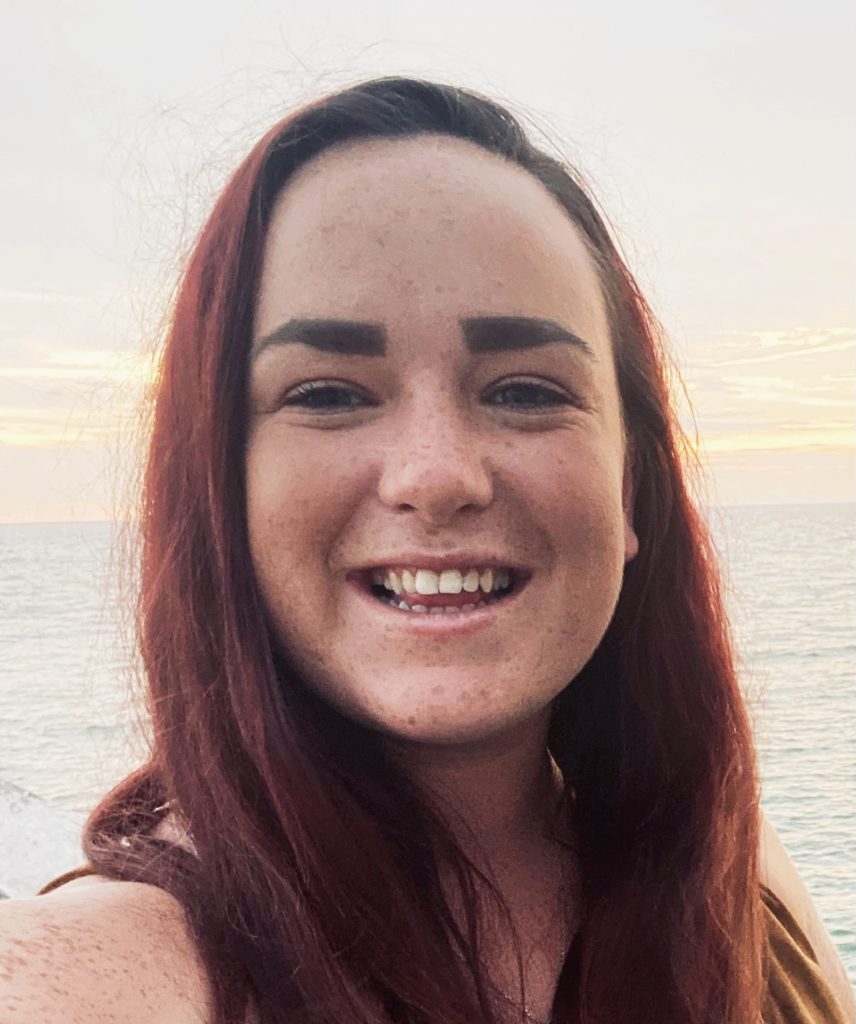
One of the keys to how the foundation works is their emphasis on diversity. Anyone can be affected by transplant, regardless of their gender orientation, race, sex or social status. This means it is also incredibly important to bring unbiased education to all communities. Looking at transplant, there are conditions more prevalent in different racial backgrounds or genders, something that isn’t commonly addressed when we are discussing transplant healthcare. Our unique situations in healthcare are created from who we are and where we come from. We all have different goals and passions, different diagnoses, and different dreams. And yet, transplant has often been viewed or portrayed as one size fits all. The Chris Klug foundation wants to fix that.
The foundation saw a need and decided to do something about it. With recent ventures, such as their Women in Transplant webinar, the desire is to meet every patient where they are and to note individual uniqueness, bridging the gap that currently exists.
The foundation is hosting more events for organ-donor education and patient inspiration, and they are always looking for more volunteers to get involved. You can email info@chrisklugfoundation.org or check out their website www.chrisklugfoundation.org for more information and to find out how you can get involved.
Willow Pill is a drag superstar who got her start in Denver, Colorado, before moving to Chicago, Illinois, where she currently resides. As a fan of drag, Willow is currently living the dream as a drag performer herself, and you may recognize her adorable, twisted and quirky drag from season 14 of RuPaul’s Drag Race.

But here’s something you might not know about Willow: she’s also a transplant recipient. Diagnosed with cystinosis, a rare, genetic disease categorized by abnormal buildup of the amino acid cystine, Willow always knew she would one day need a kidney transplant. Cystinosis can result in a buildup of crystals, which might result in blockages in the eyes, affecting the liver, and causing myopathy and muscular atrophy in the body.
At 13, Willow reached the point of kidney failure. As her family began testing to determine who would be the best match, Willow began hemodialysis. After a year of dialysis, Willow’s brother was determined to be the best match, and she received a kidney transplant from him in March of 2010.
A few years later, Willow began her drag career by performing in a student drag show at the age of 21. Drag is an outlet for the queer and transgender community, and Willow is no exception. However, what she didn’t realize going into drag was how much it would help her express not only her queerness, but her health issues, as well.
“When you’re young, you don’t realize the effect this will all have on you,” Willow said, referencing her lifelong experiences in the medical world. “You don’t realize the medical PTSD that’s there.”
Having battled illness her entire life, Willow came to terms with the fact that her life would never be “normal.”
“You end up grieving yourself,” Willow said when I asked her about how growing up with a genetic illness changed her. “You’re stuck between being alive and being dead.”
Drag helped her come to terms with her illness and transplant status. Even more so than being queer, her drag has been shaped by her experiences of loss and death. In a life marked by so much pain, from illness to transplant surgery, familial death to contending with being queer, drag became essential.
“It tethered me to being alive, to something that had so much joy and life in it,” Willow said.
Just watch a Willow Pill show and you’ll see her ability to turn trauma into something enjoyable to watch. She said she’s always had a gift for finding humor in awful things in order to reclaim her power.
Willow is now thriving as a transplant recipient. Despite bumps in the road, there have been no major complications and Willow and her medical team are hopeful for her future.
I asked Willow what she wanted to share with our community, and she was quick to say that life won’t look like the movies. But means of joy and celebration should, and can, still exist. The old dream of life is gone, but there is confidence and joy living outside of what that dream was. That’s why Willow is such an advocate about living life post-transplant. She wants others to know that thriving with your diagnosis is possible, and that life is meant to be celebrated.
We always knew this queen had a little bit of a sparkle in her eyes. You can find Willow Pill on this season of RuPaul’s Drag Race, streaming now on VH1, on instagram @willowpillqueen or on her website willowpill.com.
“Let your hopes, not your hurts, shape your future.” Author Robert H. Schuller said this, and it came to mind as I watched the Lyfebulb chat with Dr. Iraklis Kourtis, a Lyfebulb Ambassador and the Co-Founder of Chronicles Health. For me as the parent of a young man with IBD, hope is the newest arsenal in my caregiving tool kit. Back when my son was doing his hardest fighting, the smart-device and social-media tools of today did not exist. Now that they do, hope becomes something almost tangible as new innovations make it more possible for us to manage life with chronic disease.
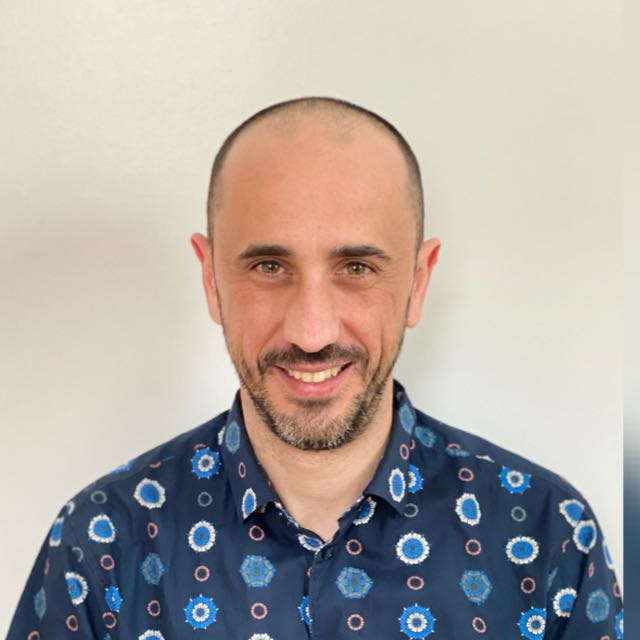
A notable source of that hope is Dr. Kourtis, who has always been an innovator; he loves to solve problems. In his mid-20s, as he was about to enter his PhD program in immunology, he had his first flareup during the PhD interviews. The cold sweats he suffered were imprinted in his mind. He lost almost fifteen pounds before receiving a proper diagnosis and being treated with corticosteroids, which temporarily helped. All of this made him think about his life span, and one thing led to another because, as I said earlier, Kourtis always wanted to create solutions. So, here he is now – an expert in digital health, bioengineering, physiology and medical-device development, combining data science and his immunology background to create those solutions with Chronicles Health, which is trying to close the loop between the patient and the care team.
What is Chronicles? It is an IBD patient platform that uses wearables (which integrate artificial intelligence and machine learning algorithms) and patient-reported quality of life metrics to detect patterns in the disease, resulting in personalized healthcare. Simply put, it is an incredible tool that did not exist for my son nine years ago, but which does today.
In the live chat, Kourtis explained that IBD doctors try to tune medication for better outcomes, but what is missing are intermediary points to connect the loop. He says that there is no actual continuous flow of data. He does not intend to reinvent the wheel, just supply the missing data points that IBD doctors need. Kourtis says that we will know if an IBD drug works must faster through all this data and that we can track flare ups and patients according to their state of flare up. Living with this disease has changed Kourtis, and he commented that “Something as life changing as this is a good opportunity to fight it and use it to succeed.”
Yes, there are many innovations out there competing for patient interests, but for each new one that emerges, I personally feel encouraged and full of that sweet sense of hope for the future of IBD care, thanks to the motivation of those like Dr. Iraklis Kourtis.
By Karin Hehenberger, MD, PhD
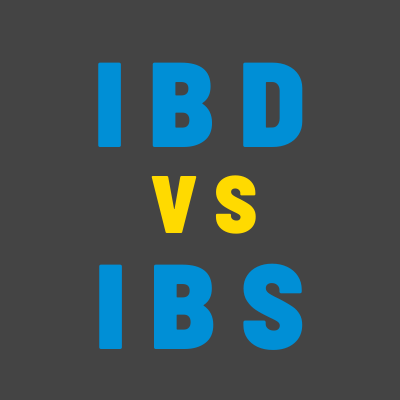
| There has been some controversy around the disease categories IBD and IBS, and I wanted to address it with a commentary from someone who has been in these kind of discussions across the life sciences field. I would also like to invite discussion from others on www.IBDLyfe.com where I am posting this commentary. IBD, or inflammatory bowel disease, is a relatively rare collection of disorders affecting primarily the small and large intestines but also being a systemic disease of inflammatory and perhaps even of autoimmune origin. These diseases include for example ulcerative colitis and Crohn’s disease (morbus Crohn). Around 2.5M people are affected in the US and many are struggling with serious consequences such as surgical complications, immune suppression and severe dehydration and malnourishment. Treatments include a range of options but very strong medications are included in the regimen that may have serious side effects. The disease affects young people but is chronic and may even cause mortality in some cases, especially in underdeveloped countries where patients have less access to care. IBS, or irritable bowel syndrome, is a very common condition, affecting around 10 percent of the population. It may cause diarrhea, constipation, pain and other gastrointestinal symptoms regularly. Many people with IBD also suffer from IBS symptoms while very few people with IBS also have IBD. And people with IBS may often feel better if they change their eating habits while people with IBD most often need more than dietary changes to treat their disease (although nutrition is an important component of IBD management). There are specialists who treat IBD, while IBS most often can be addressed by a PCP and a nutritionist. Despite the differences, we do not feel that it is right to exclude the IBS community from IBDLyfe, although we clearly understand that IBD patients need more, and more specialized, medical help and often even surgical procedures. However, the symptoms of IBS very often overlap with those of IBD patients and both categories of patients need the mental support and shared insights from a peer community. At Lyfebulb, we are all about inclusivity and believe what one person has learned about handling their chronic illness can maybe help someone else, even if their disease origins are dramatically different. Please join us in sharing your stories at www.IBDLyfe.com. |
By Karin Hehenberger, MD, PhD

| 2021 has been a blur of a year for many. Some say it feels like an extension of 2020, but I tend to disagree: It is amazing how far we have come from last year when we were in the beginning of this global pandemic, without any vaccines and without any real knowledge about how the virus spreads, why some get so sick, why some have no symptoms and why some develop so-called “long COVID”… In the second year of COVID, we know much more, this virus spreads through droplets, aerosol driven in fact, and is highly contagious in indoor settings when people are at close proximity to each other. It seems clear that underlying issues such as diabetes, obesity and age are big drivers of morbidity and mortality, while younger individuals and even infants are highly spared. Outdoor settings and surfaces are less scary now than 20 months ago, when I remember putting on gloves to fill up my car with gas! As a person living with two transplants, I am chronically immune suppressed and have been extra careful, but interestingly, this category of people has not fared as poorly as those discussed above. We have also been less affected mentally than those who are not used to having to accommodate due to disease. In fact, one of the biggest “side effects” of COVID has been mental-health issues in the young and healthy, those who had to go to school remotely and cease social activities that are so important to school-age children and young adults. Similarly, our company has gone through tremendous changes while keeping to our core mission and staying true to our cause to help people affected by chronic disease. 2021 is the year we truly became a digital-health company and launched our second digital-community platform. Our Lyfebulb network can now connect across two disease areas in a safe and nimble way, through TransplantLyfe and IBDLyfe, and this is just the beginning. Our goal is to launch at least two new platforms for disease communities each year. We believe connectivity, education and innovation drive empowerment in people with chronic disease and, therefore, we are investing in tools to promote those goals. In November, we launched a virtual patient-education series in collaboration with Columbia Presbyterian in organ-transplant education. You can find details on the dates, times and topics of those webinars on our TransplantLyfe.com website. Our proprietary network of patients and care partners is now well organized into a database that, together with our patient-facing community platforms, forms a basis for extensive research into quality-of-life issues that often are dismissed in clinical trials but are so highly valued by people living with any kind of disease. We are already in the midst of conducting our very first academic study together with Columbia University hospital to study, and hopefully validate, the impact of community connectivity on health outcomes in kidney transplant patients. We have plans for many more research studies ahead. |

While we are continuing to evolve into this digital-health space, we remain committed to our core of innovation sourcing and patient workshops to find solutions to improve quality of life. We conducted four innovation challenges, held eight workshops, and ran over fifty deep interviews with patients across eight therapeutic areas in 2021, learning a lot about patient and care-partner journeys, hurdles and opportunities. We then synthesized these insights into reports and provided them to our industry partners whom we entrust with taking these novel user-driven ideas and developing new products for the marketplace. A novelty for 2021 was that some of these reports were generated to benefit and grow Lyfebulb’s own digital platforms.
We are also working hard on the people side, and we recently hired a Chief Technology Officer who is busy building a strong team of engineers and user-experience experts. This team will leverage the extensive knowledge we have accumulated from our communities to develop novel technology to be launched by Lyfebulb.
So, as we finish up 2021, we are now mostly vaccinated (or even boosted), there are anti-viral cocktails out there to treat this disease, and schools and workplaces have found a rhythm that works for most. COVID-19 is here to stay, but hopefully never again in the manner of February of 2020.
At Lyfebulb, we are excited about our role as a mission-driven, digital-healthcare company focused on patient empowerment and look forward to 2022, a year focused on fueling our engines and accelerating our growth to improve patient and care-partner outcomes globally!
In conclusion, the team at Lyfebulb wishes everyone affected by chronic disease a wonderful New Year. It is our commitment each day to work hard and intelligently toward the goal that no one should feel alone. Instead, we strive for an educated and empowered community!
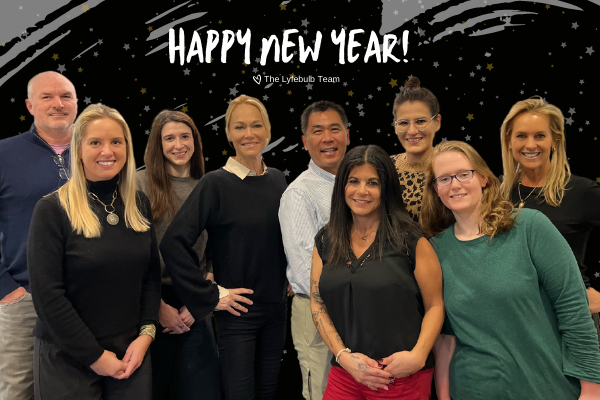
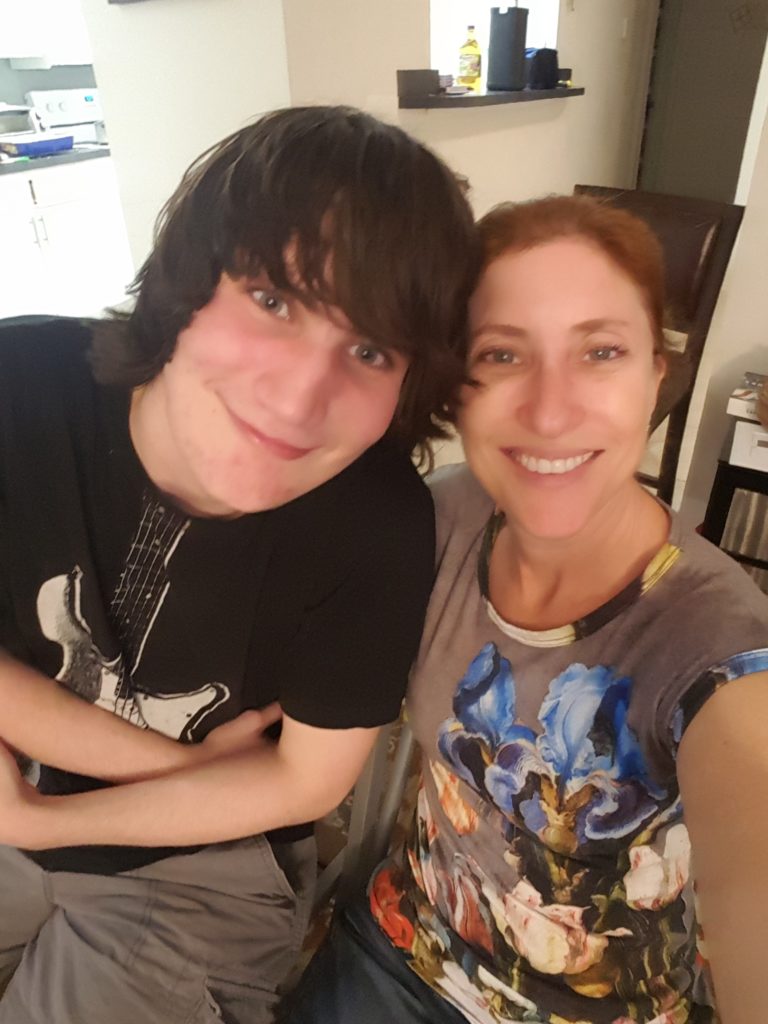
My story begins in 2011, when my then 13-year-old son first entered the children’s hospital for complications from ulcerative colitis. I felt helpless and powerless – a sensation that no parent comfortably bears. By the time my son’s intestinal health was on the path to recovery, eight months had passed, and a lifetime of irreversible consequences had been set in place. If a platform like IBDLyfe had existed, I believe some of my family’s circumstances would have come out differently. But my mantra has always been that timing is everything in life, and so here I am to tell you about my motivation for joining Lyfebulb on this journey.
My son had been diagnosed with UC at age 9, after several years of digestive issues, but his situation did not reach a life-threatening state until that December of 2011. At that time, he had been on corticosteroids for almost a year and wore the typical “moon” face and puffy weight gain of someone taking long-term steroidal medication. His recent onset of puberty growth had also been stunted. That December of 2011 would be the start of a decline that would lead him back into the hospital in April of 2012 for his colectomy and J-pouch reconstructive surgery (after becoming refractive to corticosteroids for 18 months), followed by his reversal surgery in July, which resulted in complications that led to a third surgery days later. In total, he spent 81 days in the hospital from December 2011 to July 2012.
During the time that I lived in the children’s hospital, so much of my life was put on hold. Of course, I could not leave my job at the college where I taught, nor could I stop raising my younger child, who was 11 years old at the time. But in my heart, I had abandoned the quality of my work outside that hospital. And other people suffered.
As the parent, one of my obligations was keeping family and friends informed of my son’s status. The only source I found at that time was a website whose name I will not mention here but which served then as a great source of sharing information and maintaining communication on an intimate scale with those who needed to know. However, what that site could not provide me were the resources I desperately craved:
I wanted to know what others in my parenting situation were doing or had done. I wanted to talk with those who understood what I was experiencing and feeling without being pitied. I wanted to know about predicted scientific outcomes for the surgery my son was undertaking. I wanted to journal about my experience in one organized place, to create a history of what was happening, lest my memory fail me when I needed to retrieve details for future medical visits with my son. I wanted parental advice on how to productively manage my professional and family life beyond the hospital. I wanted someone in the know to reassure me that my family and I would get through this intact, not just physically but also mentally. I wanted a community to call my own as the parent who was suffering in a different way from my son but suffering, nonetheless.
Here I am nine years later in 2021. My son lives a mostly healthy life with his J-pouch still appearing to do its job, but there are issues. Since he is 23 years old, I have had to step back and let him tackle those issues independently. Still, he reaches out to me as a caregiver and partner on this life journey of his, and still, I am often stumped as to what to say or recommend. Now I am the IBD Community Manager at Lyfebulb, and I am excited and finally optimistic, not only for my son’s potential access to information and resources but also for my own. I could not prevent the personal casualties of 2012, but now there is IBDLyfe. Hopefully I can help current and future caregivers along their IBD journey, encouraging their contribution to this community that has so much to offer … before it is too late. And that can only be better for the patients we love so dearly. I will conclude by repeating my mantra: Timing Is Everything in Life. And the time is now.

I chatted with Petter Björquist, one of the finalists for the CSL Behring Transplant Innovation Challenge, about his novel innovation for the future of transplantation.
His company, VERIGRAFT, is developing a method of creating personalized organs from donors without the requirement of immunosuppression, avoiding tissue rejection, infection, other side effects, and the high price tag associated with typical transplantation. Currently, they are developing non-vital organs, such as blood vessels and nerves. It is a two-step process that first takes off the donor’s cells – decellularization. This leaves an empty tube, which is the 3D structure scaffold of a blood vessel, for example. Yet without the cells, it has no identity. The second part of the process gives the organ an identity again – personalized with the new patient’s cells and other noncellular material. What’s unique about this innovation is that it only requires 50mL of blood to be incubated with the blood vessel scaffold for about a week. Then, the new organ is ready to be transplanted into the patient.
The inspiration behind this research
I asked Petter what his inspiration and driving force behind this research was and what propels the continued advancement.
Although he has no direct connection to transplant (He worked in the field of cell therapies for 25 years and saw many ill patients.), Petter sees the opportunities and the significant challenges for those suffering and in medical need. He often receives emails from patients who are hoping to be cured of their disease. They are his motivation.
“This is the best job in the world – it’s a scientific challenge and I’m also working towards solving patients problems,” Petter said. He added that being a finalist in the innovation challenge was an incredible experience, despite not actually winning.
As we know, performing research is very expensive. It requires hard work from many individuals, material consumption, clinical phase regulation, and administrative burdens, which all have to be financed. Although he didn’t win the Innovation challenge, the opportunity to share his innovation with a larger transplant-research community and potential investors helped him tremendously. He was also able to benchmark his innovation against others in the field who gave him useful input and asked questions that challenged and supported his business model. For him, coming in contact with the large ecosystem of the transplant community was truly a pleasure.
The Future of VERIGRAFT and personalized transplants
I asked Petter how he hopes this innovation will advance the health of patients, and his answer was quite simple: He hopes it will change people’s lives.
In the eight years since starting his research and company, it has already advanced so far – currently testing the solution in patients and examining a range of diseases to provide viable therapeutics. Petter hopes this innovation method ultimately changes the lives of people and allows them to have a much better quality of life. Those that are significantly hindered in their daily activities are in desperate need of health improvement. This innovation will hopefully provide just that.
To advance, Petter wants to see positive results from the current ongoing patient testing, before he expands the company, clinical trial sites, and business connections beyond Europe and into the US and Asia. The pipeline for the clinical testing and expansion for other indications will continue for the next three to five years. And, Petter’s long-term goals are to partner with a larger company that can help speed up development of these products and innovations and to expand this technology into larger vital organs. The current research is laying the groundwork for anticipated regulatory hurdles and securing financing from a positive track record with the current study outcomes.
The transplant field is filled with many heartbreaking and inspiring stories. Some linger deep in the soul and provoke action. This is the situation my friend, Denise, found herself in. Denise is a heart-transplant recipient herself who, in the middle of her own personal transplantation experience, started the HeartFelt Help Foundation.
Having been sick her entire life, the medical world wasn’t new to Denise. Prior to her lifesaving transplant, Denise had been shocked multiple times, had 3 ICD’s, and had more hospital stays than she could keep track of. Despite knowing her situation would almost certainly end in transplant or death, she believed a heart transplant was something that wouldn’t happen to her.
In December 2017, Denise was given the news by her doctor that without a transplant she wouldn’t survive more than a year. And so Denise went home and planned her funeral.
She selected music and spoke to her pastor. And, upon finalizing her last wishes, Denise endured a ventricular tachycardia attack.
Denise was rushed to the hospital via ambulance, and after multiple hospital transfers, she arrived at Stanford where she would wait until a heart became available.
Three weeks after being admitted, at 11:30 pm on January 30, 2018, a call came. There was a heart that had become available, and while it was high risk, it was Denise’s if she chose to accept. She called her husband on the phone and they discussed this offer, which she describes as feeling more like a real-estate transaction than being given a second chance at life.
The surgery took a long 12.5 hours. Due to internal bleeding, Denise had a follow-up surgery later that night, and again a week later. She faced infection, both types of rejection, and her post-transplant hospital stay ended up being far longer than the stay she faced prior to receiving her new heart.
In April of 2018, Denise returned home, and in July, she began rehab and the slow process of learning how to live again with a new heart. As she recovered, Denise made a vow to live as though her donor was watching. And in the midst of rehabilitation and her own complicated recovery, something shifted.
In a waiting room, she overheard a conversation where someone would be moved down the transplant list since they could not provide adequate funding for post-transplant housing. And, Denise, a firecracker of a woman still recovering from her own complicated surgery, knew deep down in her soul that this wasn’t ok, that no one should be denied lifesaving organs because of their financial or housing status, and that she would be the one to do something about it. Denise became the difference she longed to see in the world as she interrupted the meeting, in typical Denise fashion, and put her foot down, insisting she would find a way to gather the funds so this individual could have a safe place to stay post-transplant and not be moved down the list.
Enter the Heartfelt Help foundation. It began as an effort to raise money for one person’s post-transplant housing. But the lack of safe and affordable transplant housing close to major transplant centers doesn’t just affect one person, and once the fire had been ignited to make a difference, there was no way to simply turn it off. In 2020, Heartfelt Help Foundation became an approved non-profit organization with a focus on supporting transplant patients in California and providing post-transplant housing close to the hospital.
I could see the emotion on Denise’s face as she spoke, and her stories of those she has helped through her organization translated into pure joy. I felt it, too, as she explained that nonprofits are there to fill in the gaps and provide a safe place for people who have nowhere else to turn.
“Transplant is a new life,” Denise said. “And, it shouldn’t create additional worry in life.”
I asked Denise how, in the middle of her own struggle, she continues to reach out and provide for others, and she told me that it is from others that she draws her inspiration. Her sense of value comes from serving others, and in the end, it doesn’t matter what she has but how many lives she has been able to touch.
Tomorrow isn’t promised. And, if there was ever a time to make a difference, it’s now. Denise is a shining example of drawing from personal pain to create beauty and building a life full of thriving for herself and others post-transplant.
